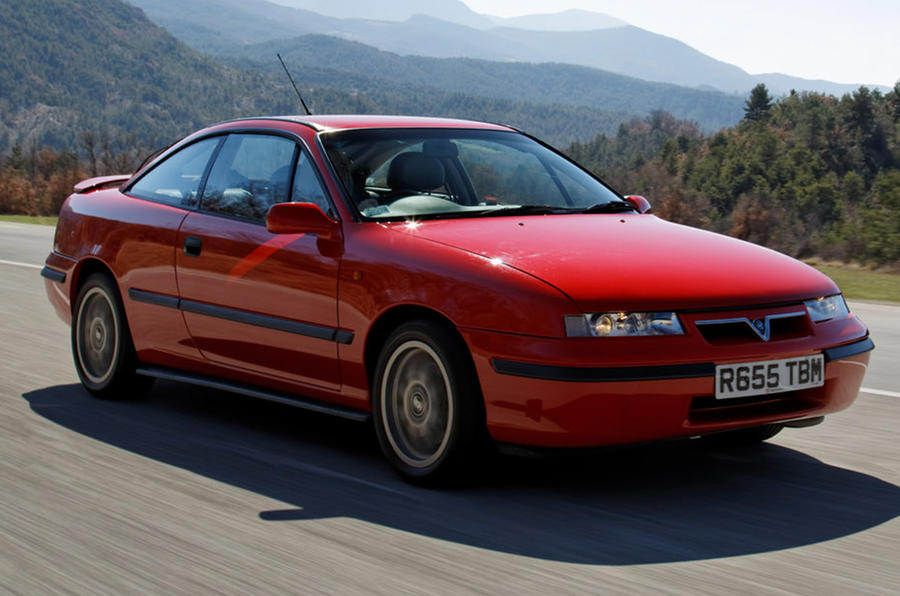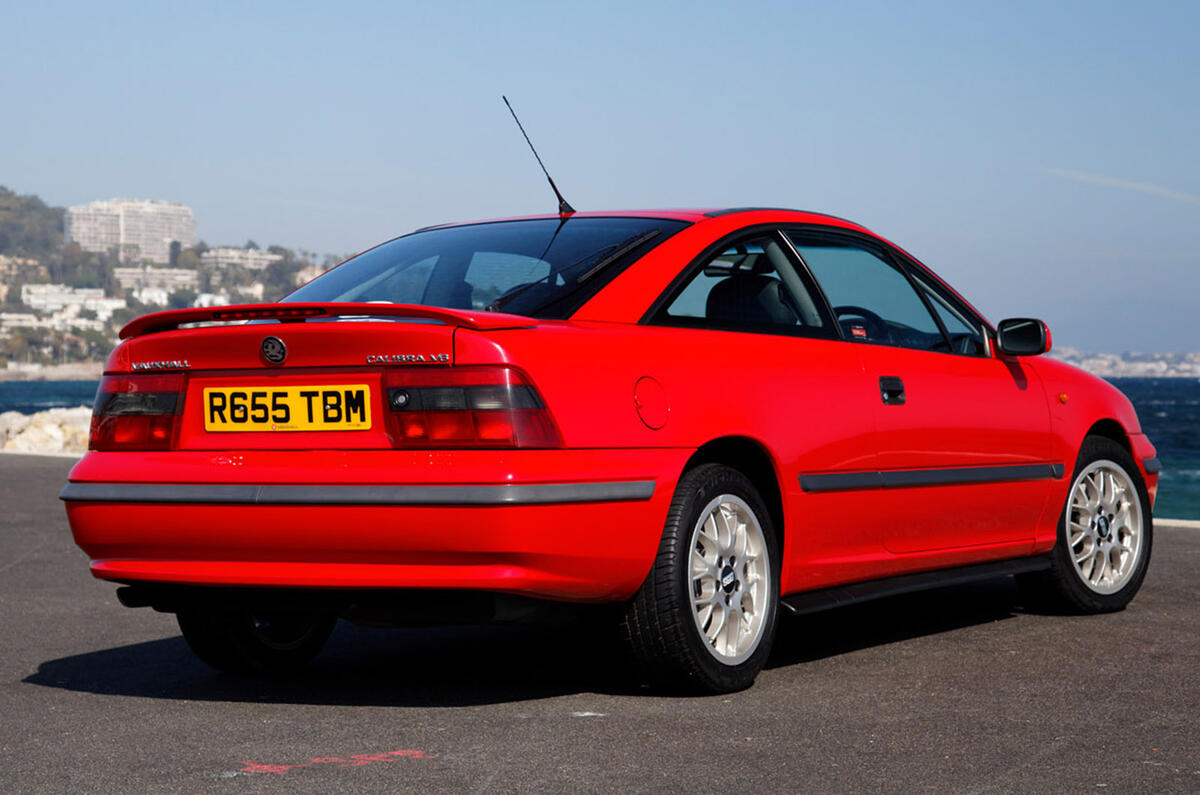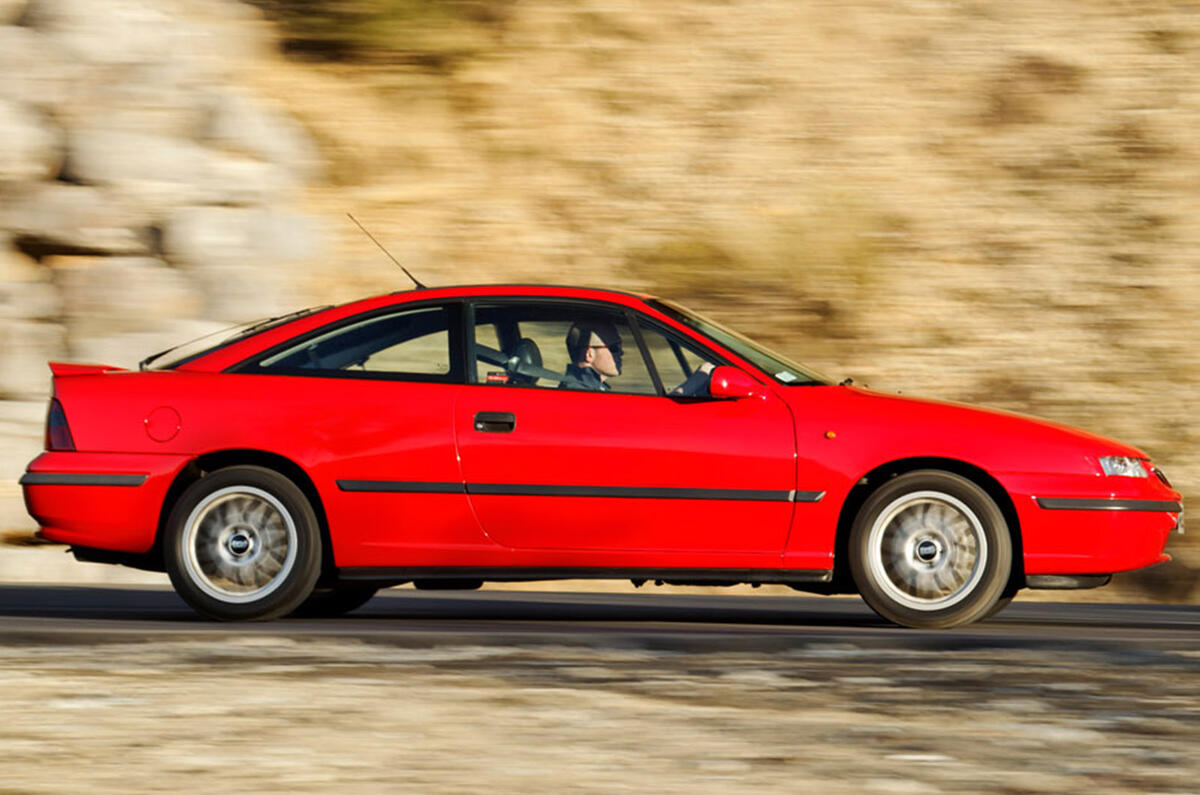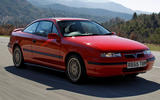Here it is, then: the 1990s Vauxhall you didn’t know you wanted, until now. Not only is the Calibra much more affordable than the Japanese cult classics with which it was originally designed to lock horns, but its humble Cavalier-based underpinnings mean it’s also a relative cinch to maintain.
At its 1989 launch, the Vauxhall Calibra – penned by the recently departed Erhard Schnell, an Opel designer of nearly 40 years – was the most aerodynamically efficient car money could buy, a title it retained until 1999, when Honda’s Insight arrived. Its sharply styled wedge-shaped profile remains a big factor in its desirability, especially compared with its bulbous Ford Probe rival.
Click here to buy your next used car from Autocar
The coupé, famed for its unusually usable rear seats, could be specified initially with a 2.0-litre 8v four-cylinder pushing out 115bhp or, for the more sporting-inclined owner, the 16v Cosworth-designed ‘Red Top’ unit that bumped power up to 150bhp. The less powerful unit – also found in the Astra GTE and Cavalier SRi – could actually be an overlooked gem, with enough grunt to raise an occasional eyebrow and cheaper running costs than the 16v.

But there was more to come. In 1992, the more potent motor gained four-wheel drive and a significant 54bhp boost – courtesy of a newly added turbocharger – which made the top-rung Calibra capable of sprinting from zero to 62mph in six seconds and on to a top speed of 152mph. That’s sports car quick, even today, and you didn’t have to wait an eternity for the power to be delivered in one lump sum, either. The Calibra Turbo was revered for the smooth nature of its acceleration, relatively unimpeded as it was by the lag that dogged many a turbo four of its era.
Sadly, this variant didn’t set the showrooms alight and it’s the less powerful, naturally aspirated 2.5-litre V6 option, introduced in 1993, that is most common in the classifieds today. With just 168bhp on tap, it wasn’t quite as quick off the mark but won acclaim for its superior refinement and durability. Contemporary reviews praised the efficacy of the electronic traction control system – hot stuff in the early 1990s – and user-friendly interior, but they largely pointed speed seekers towards the racy 16v Turbo.





















Join the debate
Add your comment
Jesus Felix, more mistakes -
Jesus Felix, more mistakes - the Calibra was styled by Wayne Cherry as well and it was only the 8v that was the worlds most aerodynamic car (0.26) at the time, the wider tyred 16v and V6s were 0.29. Its still pretty good looking today, but GM europe has never been able to make decent handling front drive cars, so it drove like sh*te back then, as countless roadtests from the time say, dread to think how it drives today. Best loked at and not drived really.
typos1 wrote:
Lol - "loked at and not drived" should have read "looked at and not driven".
A cracking looking car, back
Wow...a Calibra buying guide
One can almost hear the bottom of the motor journalism barrell giving way